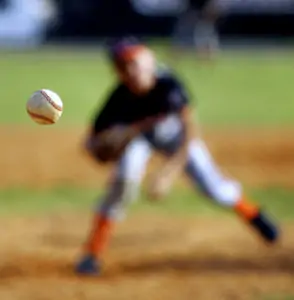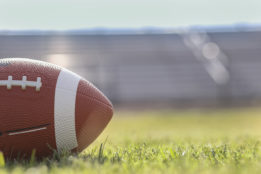5 Reasons Competitive Athletes Choose LASIK
Professional athletes train their bodies to perform at an elite skill level. Because vision is integral to physical performance, athletes require vision correction that is always in place and can stand up to extreme conditions. Not surprisingly, many athletes choose LASIK due to its safety and effectiveness.
Wherever a sport takes place, field, pitch, course, track, or beach, the environment is a challenge to those athletes with vision issues. Dirt, sand, wind, and rain, changes from natural to artificial lighting conditions, and dealing with physical conditions, such as exertion and collisions, make eyeglasses and contacts hard to use. Aside from the issues with glasses and contacts, there are many reasons why athletes choose LASIK.
5 Reasons Athletes Choose LASIK
- Better vision after LASIK surgery helps reaction time and depth perception. Ask Phoenix Suns guard, Chris Paul, if having LASIK in the 2016 off-season has made a difference in his performance. Better yet, let’s check his player stats. Shortly after the procedure, Paul averaged 17.9 points per game, dominating the free throw line by knocking down 89 percent of his attempts making him the NBA’s third-best three-point shooter that season. For the 2020-2021 season, Paul led the Phoenix Suns to the championship and lead the league with a 93% free throw percentage.
- LASIK allows individuals to see contrast better under different kinds of light and against different backgrounds than glasses or contacts. Think of a baseball player like Detroit Lions catcher Wilson Ramos, who had the procedure earlier this year, having to sight a small, fast-moving ball against dirt, grass, or grandstand and in all different types of light both natural and artificial. It’s not easy for even those with the best vision. Imagine relying on glasses or even contacts to make plays in those conditions and Ramos’ choice of LASIK makes perfect sense. Ramos publicly credits LASIK for giving him the vision to accurately see and react to pitches and his 2016 stats benefited significantly with a career-high batting average of .307 for the season, along with a spot on the National League All-Star line up. For the 2021 season, watch out for baseball legend and new addition to the Padres’ lineup Manny Machado. He had laser vision correction in the offseason with an eye toward improving his batting average – after having one of his career-high seasons in 2020.
- LASIK provides individuals with “normal vision” – not the minification that occurs with myopic glasses. Professional golfers have stated LASIK has improved their putting since the hole now appears larger.
- LASIK stands up to extreme environments. Sweat, helmets, other gear, and weather can make it impossible to wear glasses. And contact lenses aren’t completely reliable in wind, dust, or contact situations.
- LASIK has a recovery period with minimal downtime. Most people are back to their routine within 24-48 hours after LASIK. Athletes, with their strenuous physical fitness routine, may require a week or two off from their training. Managing the recovery period, including the post-operative regimen of medicated drops, oral antibiotics, artificial tears, and eye protection is relatively simple to maintain during the off-season.
Because different types of sports have different requirements, athletes should know there are options when it comes to laser vision correction treatment. LASIK is the most popular laser vision correction procedure available today because it is a safe and effective option, delivering excellent vision with a fast recovery time in a two-step process. LASIK works by creating a flap in the cornea – today most LASIK surgeons use an advanced, very precise femtosecond laser – to reveal the inner cornea where the vision correction is performed. Once the flap is replaced, the procedure is over, and typically, patients experience an immediate improvement in their vision quality. That improvement increases during the healing process.
Other approaches are available that don’t involve a flap – instead, the surgeon uses a laser to reshape the outer surface of the cornea. This is known as “surface ablation” or Photorefractive Keratectomy (PRK). This offers excellent results as well, and the surface of the cornea is initially stronger because there is no flap, but there is a longer recovery period. After nearly 20 years and more than 19 million procedures, we know LASIK is an extremely safe and stable vision correction option for many types of sports – including contact sports such as football and boxing. LASIK is approved for the military so it is obviously reasonable for athletes, but when there is a high probability of getting jabbed in the eye with a finger – such as in basketball, wrestling, and mixed martial arts – some surgeons may recommend surface ablation.
Whatever your sport – at whatever level you play – an in-depth consultation with your LASIK surgeon can help you make the right decisions about vision correction.





